History
The very idea of sitting in a records office ordering up old maps and census documents was completely alien to me five years ago. I never really got on with History at school and dropped it in favour of Economics at GCSE (what was I thinking!). In hindsight, I think the problem was that I found it such a vast and unrelatable subject…I couldn’t find a way ‘in’.
Not long after we moved into this house, the BBC launched a new series called A House Through Time, in which the history of a single house and its occupants through the ages was told. The story would often head off on tangents and link to the wider history of the city, country and beyond. I think it’s a brilliant series because it draws in several disperate strands of world history and ties it to the lives lived out in one building. Suddenly I found a way ‘in’ and I was inspired to start researching the history of our own house.
Our neighbour who lives in the other half of the building had done the same thing a few years back and she kindly shared her research with me. The first thing I wanted to find out about was the building itself: how old it is and how it has changed over time.
Age and evolution of the building.
It seemed to me that the best way to start would be to find all the maps that have ever been made of the area, as far back as possible, and see which ones the house features on. I absolutely love maps and I think the Ordnance Survey is excellent but it only goes back so far. The Bristol Know Your Place website (https://maps.bristol.gov.uk/kyp) is an incredible resource where you can overlay various historic maps and compare them with the present day but frustratingly, being right on the edge of the city, we fall off the edge of maps made before the OS 1st Edition of 1844.
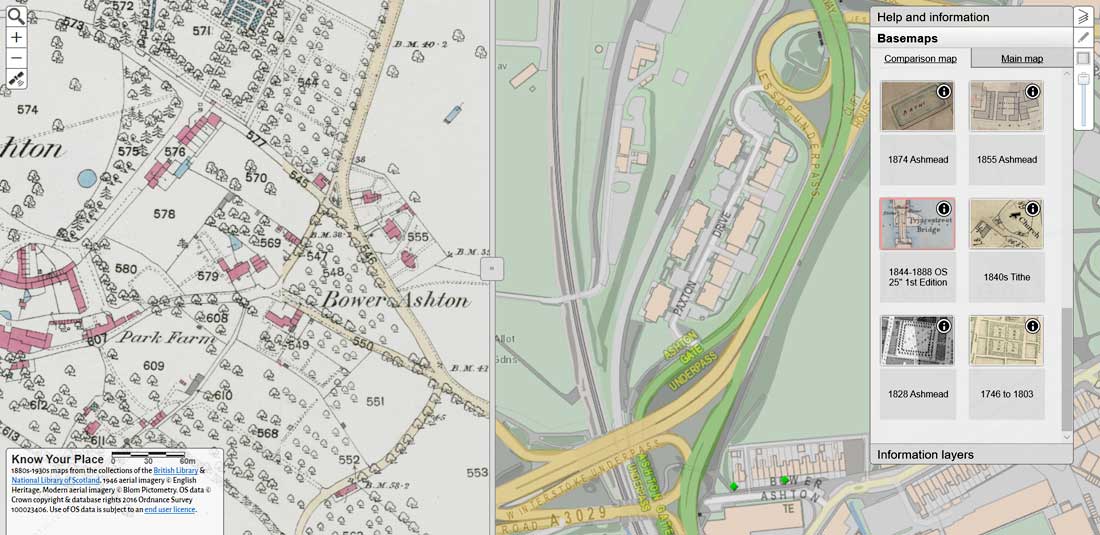
The house is right on the boundary of the Ashton Court estate in the hamlet of Bower Ashton, so I presumed it formed part of that estate and spent an afternoon in the Bristol Records Office looking for maps in the Ashton Court archives. This was quite an experience. Some of the older maps were huge rolled up sheets of vellum or linen over 6ft long including a beautiful hand painted map of the estate, the oldest map I could find, which according to the records was surveyed in 1730. It did feature our house on it, but as a long oblong shape rather than the square footprint it has nowadays. This suggests that the front half, or front pile, of the house existed in 1730 but not the rear pile, which is consistent with the architecture. This is definitely a house of two halves with 3 low-ceiling floors in the front half and two high-ceiling floors in the rear half clearly added at a later time.
There was an equally impressive large map of The Manor of Long Ashton dated 1789 which also featured only the older half of the house. This map was a lot more detailed and a bit more accurate, with the oblong shape of the house orientated correctly and the teardrop shape of the boundary walls, which still exist in parts, more accurately rendered than in the 1730 map. It is interesting to note that the lane down to the Rownham Ferry used to pass right next to the end wall of the house, underneath where our kitchen is now built. Also, if you look carefully, you can see pencil marks made tracing the path of the current Clanage Road. I can imagine members of the Smyth family up at Ashton Court poring over this very map, planning the building of this new road and the position of the toll house for it, possibly as a response to the announcement of the competition to design the Clifton Suspension Bridge (famously won by I.K.Brunel).
The next map that the house shows up on is another of the Manor of Long Ashton, but this one was accompanied by a series of small A6 (ish) survey cards, each with a coloured map of a section of the manor accompanied by details of the tenants and presumably their rent. This was dated 1826 and the maps on the cards had decent detail, enough to show that by this time, our house has had the rear pile added to it making the footprint much squarer.
I assume there is something about the engineering involved making a pitched roof which limits the width of most vernacular buildings to about 4m (although there would be no constraint on the length, hence the abundance of ‘long houses’). In order to make a building deeper therefore, you’d have to add another pitched roof meeting at a valley in the middle and creating a zig-zag ‘M’ shaped gable-end profile. This is known as a ‘double pile’ house, sometimes also called a ‘double house’, so perhaps this is when the house got its name.
It isn’t clear whether the house was one large dwelling at this time or whether it had been split down the middle. We can see that Clanage Road had been built and the old lane to the ferry had been removed with the section running past the house now turned into a parcel of land simply referred to as ‘Yard’. According to the survey cards, this ‘yard’ and the associated ‘house and garden’ were both tenanted by Ann Edgell, so perhaps it was one complete house…it must’ve been massive!
A much more detailed tithe map dated 1841 shows that the house had been divided down the middle by this time, which is how it remains to this day.
So in conclusion, it seems the history of the building is briefly as follows:
- Pre 1730 – A single pile 3 storey house is built
- 1789-1826 – A 2 storey rear pile in Regency style is added to create a ‘double house’
- 1826-1841 – The double pile house is divided down the middle (front to back) to create two separate dwellings.
The Occupants.
The day we first moved in, there was a wooden box waiting for us in front of the fire place. It was full of all sorts of treasures: coins dating back to George I, marbles, toys, letters and a random glove. It turns out these were all found above the ceiling in our house, presumably when the previous occupant removed the lath and plaster ceiling in the lounge. No doubt these things had fallen through the floorboards from the room above and have sat there through the ages waiting to be rediscovered. It was really thoughtful of the previous occupant’s daughter to leave it for us; our children love it and they call it the ‘Box of Treasure’.
The producers of the House Through Time program approached us a year or so ago (as well as many other houses in Bristol) as potential candidates for the current series. They did not choose our house but they did kindly send us their preliminary research. Much of this confirmed the research my neighbour had already done but there were one or two new snippets that have inspired me to go off and look a little deeper into the lives of the people who have lived here, and to try and link them to some of the objects in our box of treasure.
Broadly then, the timeline seems to be as follows:
- 1826 – Ann Edgell. She seems to have some sort of shared ownership of the house (by this time a double pile house but not clear if it has been divided into two yet) with Sir John Smyth (of Ashton Court) and someone called William Gore Langton. She also seems to be renting the ‘Yard’ adjacent to the house, formerly part of the lane leading to Rownham Ferry.
- 1841 – The house has been divided into two with Ann Edgell (age 60) living at Number 4 (my neighbour’s half) with a female servant. Meanwhile, Samuel Hancock (age 30), an agricultural labourer, is living in Number 3 (our half) with his wife, child, a female servant called Mary Mansfield (only 15), another agricultural labourer called William Pillow (35) and a woman called Ann Webb (35). There is a record of Sarah Edgell, Ann’s sister, dying in 1829 so I wonder whether Ann, living alone, might’ve decided to split the house down the middle and rent out the other half? There are several adverts in the Western Daily Press in the 1850’s for apartments/rooms to let at the house (called Double House at this time)
- 1851 – The Hancock family are listed as living in Bower Ashton but there is no mention of ‘Double House’. Also listed in Bower Ashton at this time is the Gough Family and the Brittan Family, both of whom are living at ‘Double House’ 10 years later. I cannot tell whether they are all living here or whether the Hancocks have moved out but I suspect that the Goughs at least are living here at this time.
- 1861 – The census does not distinguish between numbers 3 and 4, referring just to ‘Double House’, but we’re pretty sure the living arrangements were as follows because several artefacts relating to the Gough family were included in the ceiling space treasure recovered from our half of the house.
- Number 3: Judith Gough (44), a widowed milkwoman, living with her mother-in-law Mary Gough (84), Son George (19), Son Robert (15) and Daughter Emily (10).*
- Number 4: Sarah Brittan (56), a widowed fundholder, her daughter Harriet (21), her married daughter Sarah Mathew (28) and granddaughter Isabella (3 months).
- 1871 – The Gough family do appear in the census but there is no house name. I am confident they still live at number 3 though because one of the artefacts found in the treasure box is a luggage label addressed to ‘Miss Gough, Double House, Bower Ashton’ and dated 22.4.87. The make-up of the household has changed slightly though:
- Number 3: Judith Gough (54), dairywoman, Robert Gough (25) son, dairyman & sub postmaster, Emily (20) daughter, sub postmaster’s assistant.
So far, this is consistent with the 1861 census, except there is no mention of the oldest son George. Instead there is the addition of:
-
- Mary Ann Gough (24) daughter, milliner, Elizabeth (22) daughter, dress & mantle maker, George Gough (3) grandson, Alice Ann Gillet (6) niece.
It seems that in the intervening 10 years, two daughters have moved back home. Elizabeth is listed in the 1861 census as a servant (aged 12) in the household of Charles Gillet in nearby Bedminster, a slightly odd arrangement as he is her uncle (Judith’s brother, possibly father of Alice Ann Gillet now living with the Gough family). Oldest son George, who was an agricultural labourer, has married a Mary Wellstead in 1866 and died in 1867. This throws up the following questions:
-
-
- How did George Die?
- Is the grandson George his son and if so…**
- …what happened to his wife Mary?***
-
- 1881 – Again there is no listing for Double House in this census but I believe the Goughs were still living here at this time:
- Judith Gough is now 65, Robert (35) unmarried, dairyman/farmer employing 2 men and 3 boys, Elizabeth (31) unmarried, George (13) grandson.
In the Box of Treasure was a letter addressed to ‘Master Georgie Gough’ and dated February 1881. It was sent from the Lamb and Lark Hotel in Keynsham and although much of the letter has perished, the parts that remain legible seem to describe a shipwreck:
‘…the harbour at the time and the waves dashed over the ship with such fury that her hull began …. to break up. It was a awful scene crowds looking on ….. and the shore quite …….but a brave sailor….the fall and plunging into the waves he picked up the child…in life and restored it to its mothers arms Then she clasped it…..and soon her husband….’
Dramatic sounding stuff! I can’t tell who wrote the letter but it was clearly intended for George the grandson (13 at the time)…perhaps, given the affectionate use of the name ‘Georgie’, it was sent by his mother? Perhaps she works and lives at the Hotel in Keynsham?****
Sadly, young Georgie died two years later at the age of 15, his obituary appearing in the Western Daily Press on March 19th 1883.
Judith Gough herself dies on 14th September 1888 and thus ends the story of the Gough family in this house.
* Judith’s husband Edward Gough had died in 1854. George Gough was his son from a previous marriage so was in fact Judith’s stepson.
** I cannot find any record of George’s baptism. I can only assume that he is George’s son given that he has his name and was conceived in the first year of George’s marriage to Mary, shortly before his death. He probably never met his son, may not even have known Mary was pregnant. I’m guessing that Mary was in a difficult position, widowed with a newborn son, and so the son has been sent to live with granny and aunts?
***Mary Gough shows up in the 1871 census living on Catherine Mead Street in nearby Bedminster with her sister Martha Wellstead and William Gough, presumably a cousin of George’s.
****Actually, it is probably from the boy’s aunt Mary Ann Gough who has married Henry James Cox and together they run the Lamb & Lark Hotel.
- 1891 – By now there are two new families living in Double House, but the census still doesn’t distinguish between the two halves. I think the living arrangements must’ve been as follows:
-
- Number 3: William Evans (47) enginewright at the colliery and his wife Harriet Evans (46), sons Nicholas (23) and Frank (16) both railway clerks, daughter Agnes (18) elementary school teacher, and daughters Edith (15), Alice (12), Bessie (10) and Beatrice (6) all at school.
- Number 4: Joseph Kerr (37) estate bailiff and his wife Margaret Kerr (39), with two young daughters Margaret (2) and Annie (3 months).
The reason I think this is because later on, in 1910, a valuation survey states that number 3 is occupied by ‘Wm Evans’ and number 4 by ‘Chas Froud’. At this time, the Ashton Court Estate owned a nearby colliery which I assume is where William Evans worked.
- 1901 – Both families are listed next to each other in the census under Bower Ashton but with no mention of Double House. I assume the living arrangements remain the same. The younger girls who were at school last time have all grown up and become school mistresses but there is now a mystery new addition to the household:
- May Oliver (5), granddaughter, born in Fulham.
The seven Evans children are all still listed as single so the question is; whose daughter is this?
- 1911 – The census changes format in 1911 with more information about each household. The Evans family are still listed but the seven children have all moved out leaving just William (67) who is now a manager of what I think says a ‘Glue & Gelatine Works’, Harriet (66) and grand daughter May Olive (15) who is at school. It must have felt a lot quieter in the house compared to the industrious scene 10 years previously when all the children were at home and had jobs either on the railway or in schools. Interestingly, it states in the census that the Evans had 10 children in total, 8 of whom survive. So:
- Who is the 8th surviving child?
- Is that May’s mother, or is she one of the ones who have died?*
At number 4, the Kerrs have moved out and there are two families in separate entries claiming to live at Double House:
-
- Alfred Charles Froude (35) who is a blacksmith and his wife Tempy (36), with children Clarice May (10) and Frederick (7).
- Herbert Froude (26) who is a carter on a farm and his wife of less than a year Violet Froude (22).
Alfred Charles is presumably ‘Chas Froud’ on the valuation survey of 1910 and on his census entry, it states that he is living in a dwelling with five rooms. Meanwhile Herbert’s entry states he is in a dwelling with two rooms. I assume Alfred and Herbert are brothers** and the two families live at number 4 in a total of seven rooms, though I’m not sure why this would require two separate entries. It would add up because at number 3, the Evans state they live in a dwelling of eight rooms and because of the way the house was divided, number 3 does have one room more than number 4 even to this day.
* The 8th surviving child is Blanche Anne Evans, William and Harriet’s oldest surviving child, who married Thomas Baker Oliver about 1895. It seems that May was their first born child but I cannot work out why she was sent to Bristol to be raised by her grandparents. Blanche and Thomas went on to have four more children who are all living with them in London in the 1911 census whilst May remains with her Grandparents in Double House. I also cannot find any further trace of May Oliver after 1911, but the publication of the 1921 census in 2022 might shine some light on that.
** They are two of five brothers and one sister living with their parents in Long Ashton in the 1891 census.
- 1921 – William Evans dies in 1921 and Harriet Evans dies in October 1922. Her probate entry has her listed in Bower Ashton so presumably still living in this house at the time. If May was still living with them, she would be 25 now but we’ll have to wait for publication of the 1921 census to find out. There is a Miss Evans listed in Bower Ashton in the 1927 Kelly’s Directory but until I can get a look at the census, I can only guess who this might be and whether she’s living here at number 3.
- 1939 – There is a bit of a lack of information available between 1911 and 1939 just at the moment. The 1921 census will be published in 2022 but the 1931 census will never be published because it was destroyed during the war. The 1939 Register for England and Wales, taken due to the onset of war in order to produce national identity cards amongst other things, has therefore become an important resource during this period and it lists the occupants of Double House as follows:
-
- Number 3: Douglas Ashford (b.1901) electrical engineer and his wife Sarah Ashford (b.1904), daughter Mary (b.1924) and two other children: Joyce Farrow (b.1928) and Ronald Farrow (b.1930), plus 2 redacted entries.
- Number 4: Violet Wedmore (b.1881), Samuel Wedmore (b.1884) organ builder, Emily Wedmore (b.1886) dressmaker, plus two redacted entries.
Joyce and Ronald Farrow were most probably evacuees from London…the rest of their family are living in West Ham at the time. The redacted entries are possibly two more evacuees. The Wedmores next door are all listed as single so are presumably brothers and sisters with two evacuees of their own. This would make sense as there would have been plenty of spare room in the houses at this time, though I don’t know why some of the entries have been redacted. Douglas Ashford is also listed as an ARP Warden on the register.
Perhaps the most charming find in our Box of Treasure is a small 1943 pocket diary. In the front is the following name and address:
Jeffrey Hordle, 6 Ruby Street, Bedminster, Bristol.
We used to live in Pearl Street, next to Ruby Street, and it is near to Bower Ashton but it doesn’t quite explain how the diary ended up here. The picture becomes a little clearer on the pages for August where we come across details of ‘The Horse Shoe Club’. The members’ names are: Jeffrey Hordle, Kenneth Williams and David Ashford. On the same page are the club rules written in a blend of capitals and lower case lettering as follows:
- Pay Subs
- Keep club ROOM CLEAN
- NOBODY TAKE MONEY FROM Subs
- NO SWEARING in club room
- Try TO ATTEND every meeting of Club
I’m not sure how long the Horse Shoe Club would have lasted under its regime of cleaning and clean language…it doesn’t sound a whole lot of fun. It does however sound like a rainy day amusement for three boys who I guess must be between 8-10 years old at the time. Perhaps the infamously clean club room is my daughter Lucy’s current bedroom, which I’m sorry to say frequently fails to live up to the expectations laid out by the founding members of the club 70 years ago.
I assume David Ashford is the son of Douglas and Sarah but he isn’t in the 1939 register. I did find a David William Ashford in the records who was born in 1941 so my guess is that this was an old diary given to Jeffrey by his mother or father, which he and his friends are using to start their club some time around 1950. There are other entries in the diary in different handwriting, including a poignant entry on March 3rd:
‘Mary went from home for the first time to her first job to Harefield House in Exmouth’
Then on the 5th March: ‘note from Mary’ and again on the 10th March: ‘letter from Mary’
This is written in neat handwriting which I don’t think belongs to Jeffrey. Given that these are date specific entries, I think these were made in 1943 when the diary was current, possibly by Jeffrey’s mother and referring to Jeffrey’s sister?
- 1948 – In 1946, Dame Esme Smyth, the last of the Smyth family to live at Ashton Court, died. The estate was then put up for sale and although the manor house remained derelict and unsold until Bristol City Council bought it in 1959, other properties owned by the estate were successfully sold off…including Double House.
We have the conveyance documents detailing the sale of Number 3 to Douglas Ashford for £950 in 1948. I’m guessing the trustees of the Ashton Court Estate approached the various tenants and offered to sell them the properties they were living in. I imagine there were sizable death duties to be paid on Dame Esme’s passing.
- 1962 – Douglas died in 1960 leaving the house to his wife Sarah Ashford who lived there for a year or so before probably deciding it’s far too big a place to be living in alone, so in 1962 she sold it to Gerald and Mary Clements for £2850. I’m not sure what sort of condition the house was in when the Clements’ bought it but I have the feeling that they, like us, spent a lot of time repairing and renovating it in the early days of their occupation. When we first moved in, there was a heavy influence of ‘Brewer’s Tudor’ style which was popular in the 1960s. I think it must have been they who made the decision to remove the lath and plaster ceilings from the lounge and first floor bedroom. Perhaps they were falling down and although it might have been more conservation friendly to repair them, this was a time prior to the house’s listing and there didn’t seem to be as big a culture for conservation in the 1960s as there is today. On the plus side though, this did reveal the items that now form the contents of the Box of Treasure and now that I have reinstated the lime plaster ceilings, the process of capturing objects of intrigue for future historians can begin again (there are already several Lego pieces collecting under the floorboards in Lucy’s room).
- 2016 – Following the death of Mary Clements, who was a widow living alone at the time, the house was put up for auction. This is where we come into the story, entering left of stage and looking a bit lost and uncertain about the whole thing…








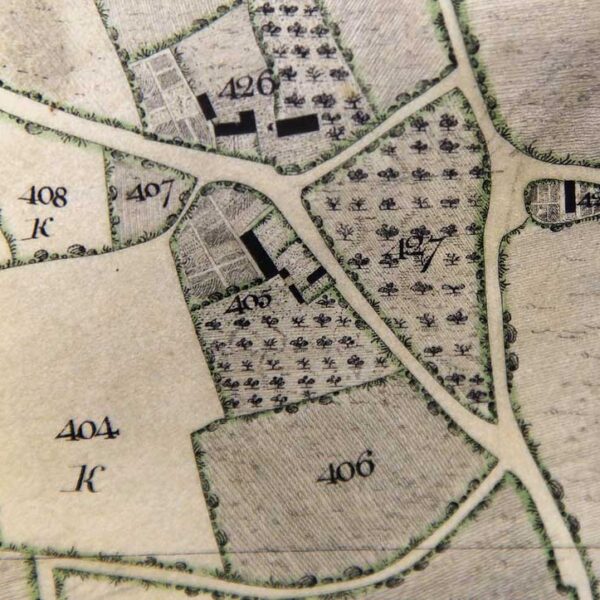

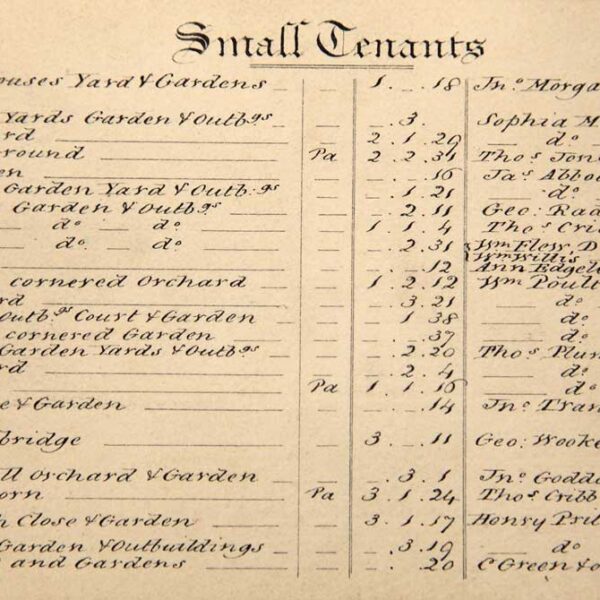
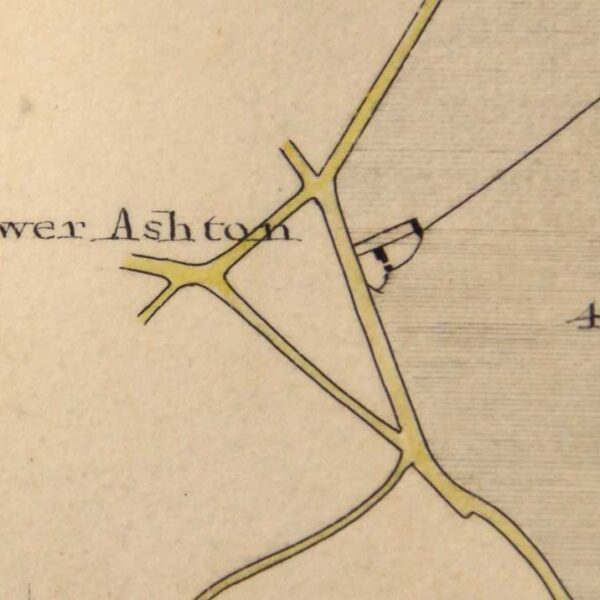
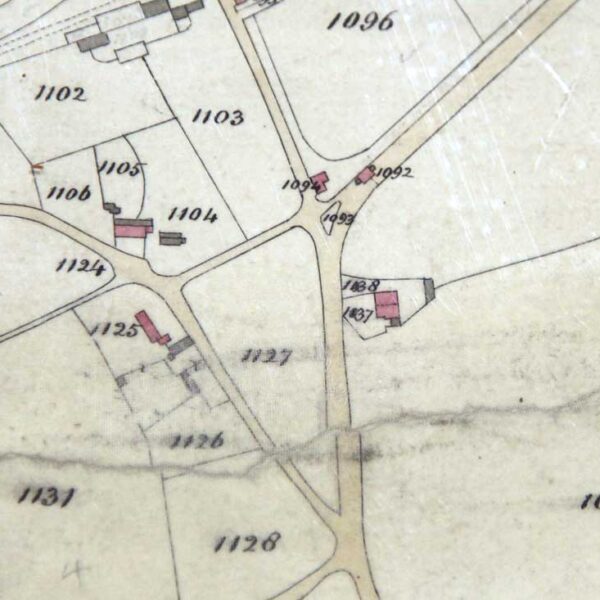
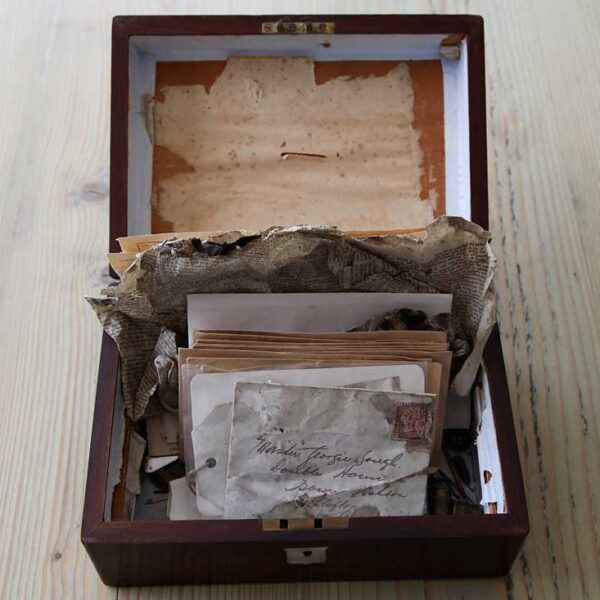
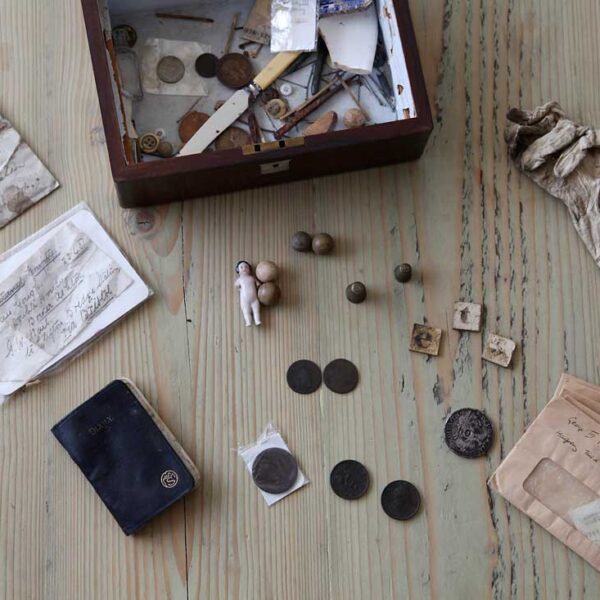
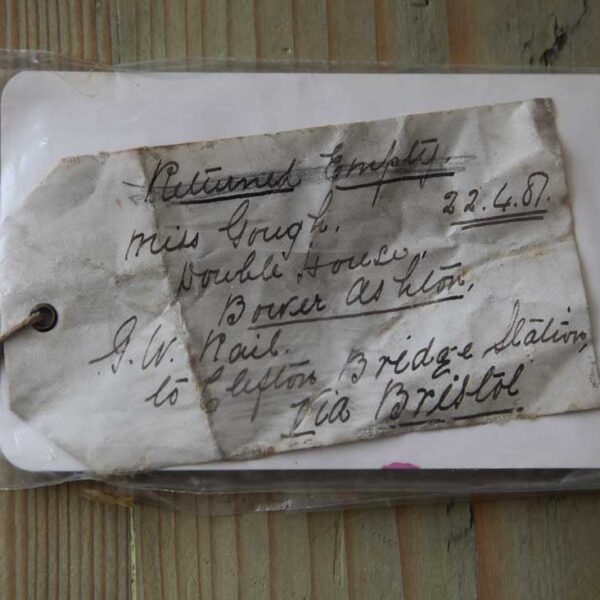
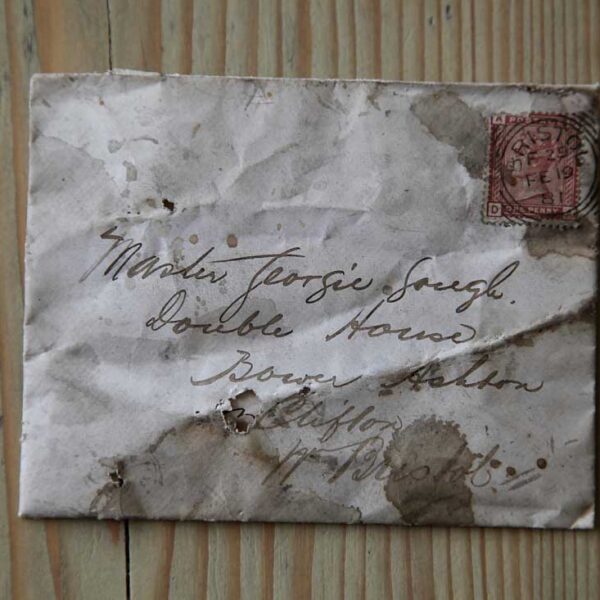
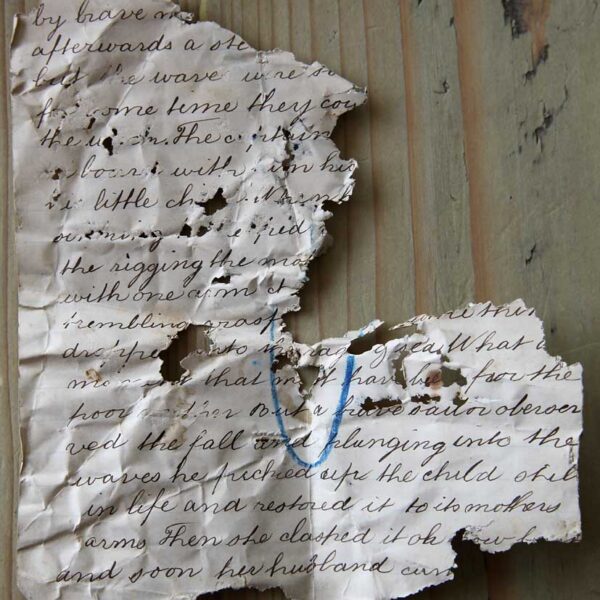


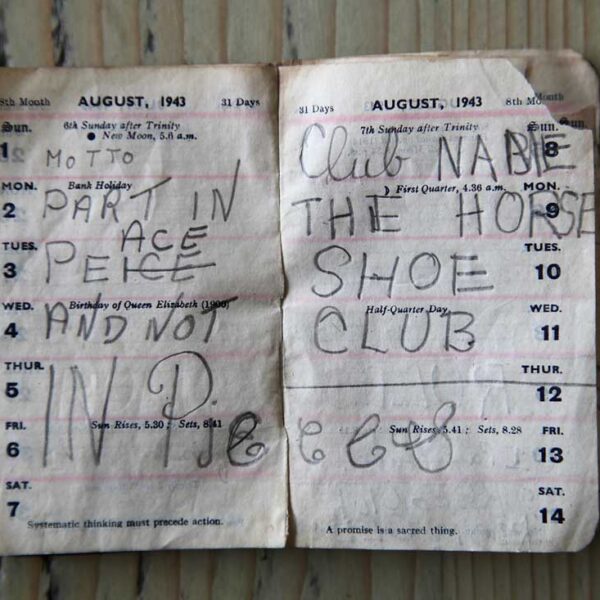

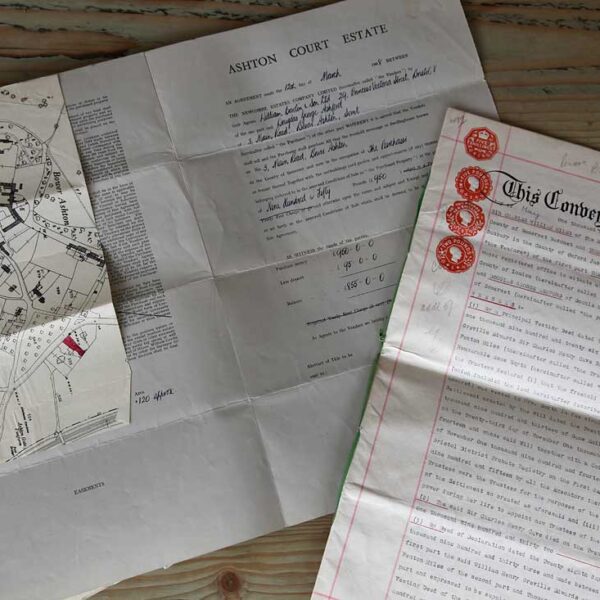
Annie Brown
Really enjoyed reading this James.. such a fascinating ongoing story and loved the way you were able to do such good detective work through the maps.
James Osmond
Thanks Anne. The detective work is addictive…there’s so much more I’d like to look into but I have to pace myself! I hope you and Chas are well.
Steph Maund
I’m amazed at how much information and detail you have found. Absolutely fascinating. When we first moved into number 2 next door I found very little accessible information at the Bristol records office, and they suggested trying Taunton! I am inspired to try again now.
Sharon Mitchell
Hello I used to live in Double House as a child and have very happy memories there with my Grandparents. I am David Edwin Ashfords daughter, his friend was Jeff Hordle who lived in Bedminster (became my Godfather) dads other brother was Malcolm Ashford their oldest sister was Mary.
If you would like to know more I have some stories about the house
I went to see the house before the auction I would love to see it now regards Sharon Mitchell (nee ASHFORD )
admin
Hi Sharon. Thank you so much for getting in touch. I’d absolutely LOVE to meet and show you around and hear your stories. If you’d like to e-mail me or send me a message via the contact page with a way to contact you back, I’ll be in touch to arrange something once its safe to do so again. All the best, James.
david ashford
David Ashford Hello having just read the above article sent me by my daughter Sharon, I am writing with some of my comments.. I lived at the house from late 1930 until 1956 when i moved away having recently having been married, and Sharon being born..Mary referred to was my eldest sister. Jeffery Hordle was my school friend and used to spend a lot of time at our hou se. Kenneth Williams lived next door to the Wedmores and there was the trio of the club meetings of which were held in the top floor box room at the front of the house. as you said three nine year olds with strange ideas. The diary could have been from our family as my father used to get them together with other items, cigarettes pens and pencils and bottles of drink from companies that sold equipment to the Electric Companies that my father worked for. The actual diary would most likely reveal this by the advertising inside. Strangely I now live in EXmouth where I have lived for 21 Years. Jeff Hordle went on to be an Accountant and a leading part of Bristol business last heard living in Clifton. I am now 86 and your article stirred so many memories. My daughter has already replied to you. I hope this will be of interest to you
admin
Hello David. I’m delighted you have got in touch and shed some more light on the diary and the Horse Shoe Club. I’ve had a closer look and I think you’re right…I think the diary must have belonged to your mother first as I’ve just noticed an entry on 2nd July that says ‘Dougs Birthday’…presumably your father, and on 28th February ‘My Birthday’, just before your sister started her job in Harefield House. Incidentally, I looked for Harefield House on the map…is it the one near Lympstone which is now a school?
The room you refer to is now my oldest son George’s bedroom. I told him this was where the Horseshoe Club was held…he likes the idea. My children are also all very interested in the idea of evacuees living here. Do you remember them? We guessed they might have shared the larger top floor bedroom…which is now my son Monty’s room. We would be interested to know who occupied each room.
Also, did you have a dog called LaLa? There is a curious entry I can’t quite read which I think refers to La La’s babies.
If you should ever be visiting Sharon in Bristol and would like to come round, I’d be delighted to meet you both. I can be contacted on the e-mail address at the bottom of this page.
All the best,
James.
Sally Slade
Hello. I cannot tell you how excited I am that I have found this. I was idly googling my great-grandfather’s name and it came up.
I am Sally Slade nee Hawkins, my mother is Wendy Hawkins (nee Gough), her father was Dennis Gough and his father was Robert Gough. Yes, that Robert Gough – the one you have as a sub-postmaster in 1871. That was my great grandfather and Judith Gough (nee Gillett) was my great great grandmother. My family are the Goughs of Double House. I am going to read this more carefully and then reply in more detail.
My family are all buried in Long Ashton churchyard, including Grandpa Dennis Gough.
I have an extensive family tree….
Speak soon!
Sally
James Osmond
Hi Sally. How great to hear from you! I’ve really enjoyed researching your ancestors and look forward to any further information you may have on them.
All the best,
James.
Sally Slade
Hello James, finding your research has provided such interest to my family!
I was wondering how we could share information – I have an extensive tree on ancestry.com which I would happily share with you. All I need is your email address: let me know if you are interested. My email is sallyslade36@aol.com.
I know that you have the letter to Master Georgie and the Miss Gough label; do you have any other belongings that are, or could be Gough-related?
I will look forward to hearing from you,
Sally
Rodney Bryant
I found this history very interesting. I am the grandson of Emily Gough who lived there with her mother Judith (nee Gillet). I found this record since my granddaughter has taken up a teaching post at Ashton Park School. Whereabouts is Double House in relation to the gateway? Emily died relatively young in 1911, my mother always said she was the most intelligent person in the family!
James Osmond
Hello Rodney, how lovely to hear from you. I guess you must be distantly related to Sally who is also descended from Judith Gough and who also got in touch. We are very near Ashton Park School. We’re on Clanage Road. It’s nice to think of Gough descendants still connected with this tiny hamlet.
Sally Slade
Hi Rodney, I was interested to see your comments. We are related, and I will try to work out how! Feel free to email me on sallyslade36@aol.com – I can share my family tree with you. Speak soon, Sally Slade
Sally Slade
Hello again, I have looked at my tree and, as grandson of Emily, you are 2nd cousin to my mum, Wendy Hawkins, nee Gough. Hope to speak more soon,
Sally
Claire
Alfred Charles Froude is my great great grandfather and Clarice May is my great gran.
Alfred was a Blacksmith for the smyth family.
Catherine
Jeffrey Hordle was my uncle.
Lovely man. He passed away a couple of years ago.
My mum, Marilyn was his baby sister. She’s my mum. He also had two brothers, Brian and Robert. Mum is the only one left.
We visited my Grandma Lilian Hordle at her home, Pinkawood Villa, 6 Ruby Street, many times over the years.
Best regards,
Catherine